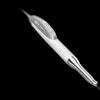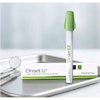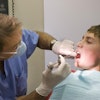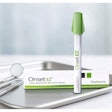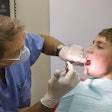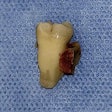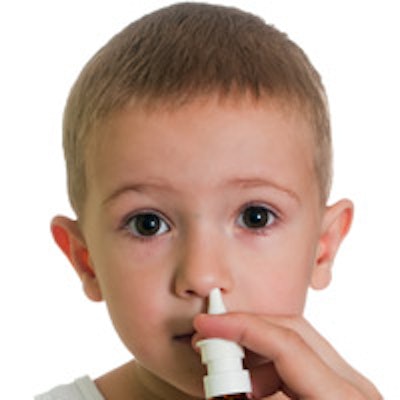
Intranasal midazolam is an effective alternative to the oral version for children undergoing dental treatments, according to a new study. Researchers found that when dentists administered the drug through the nasal cavity, children were sedated faster and had less drowsiness after dental procedures.
“Midazolam administered through the intranasal route is as effective as the oral route at a lower dosage.”
The study, published in the European Archives of Paediatric Dentistry, looked at the effectiveness of both oral and intranasal midazolam in 30 healthy but uncooperative children undergoing two subsequent dental procedures. The researchers found that both drug administration methods were well accepted by the children, but the intranasal route had a quicker onset and recovery for the patients (Eur Arch Paediatr Dent, May 5, 2015).
"Midazolam administered through the intranasal route is as effective as the oral route at a lower dosage," concluded lead study author Iqbal Musani, BDS, MDS, and colleague, from the department of pediatric and preventive dentistry at M.A. Rangoonwala Dental College and Research Centere in Pune, India. "Therefore, it is an effective alternative to the oral route for a pediatric dental situation."
Spray works faster, improves alertness
Oral midazolam is a popular method to achieve conscious sedation in children, because it has been proved safe, effective, and easily accepted by children, according to the study authors. Therefore, the researchers wanted to see if the intranasal version of the drug would reap those same benefits, providing dentists with an alternative method of administration.
The researchers looked at 30 healthy children between ages 4 and 10 who were rated as having negative or definitely negative behavior on the Frankl behavior rating scale. All the children needed two dental treatments more than one week apart. During their treatments, the children were administered midazolam either by nasal spray or oral syrup, followed by further sedation through nitrous oxide inhalation with a nasal mask.
Before their procedures, the children were divided into two groups:
- Half received oral midazolam syrup on their first visit and intranasal midazolam spray on their second visit.
- Half received intranasal midazolam spray on their first visit and oral midazolam syrup on their second visit.
The researchers found that intranasal midazolam administration worked significantly faster than oral administration in the 30 children. The average onset time of the intranasal version of the drug was 12 minutes, just under half the time of the oral version.
 Data courtesy of the European Archives of Pediatric Dentistry.
Data courtesy of the European Archives of Pediatric Dentistry.The researchers also found that children were significantly more alert after the procedure when they received intranasal midazolam. When they took the midazolam syrup, all but one of the 30 children were rated as drowsy (97%); however, only 67% felt drowsy when they received the nasal spray.
 Data courtesy of the European Archives of Pediatric Dentistry.
Data courtesy of the European Archives of Pediatric Dentistry.The midazolam nasal spray maintains these benefits even though it is administered at a lower dosage, Dr. Musani and colleague noted. For the study, the researchers calculated the dosage for oral midazolam at 0.2 mg/kg body weight, whereas intransal midazolam was calculated at 0.1 mg/kg.
Both methods are effective
The researchers didn't find any statistically significant differences otherwise between the midazolam nasal spray and oral syrup. The children were all accepting of the drug and mostly accepting of the anesthetic mask once sedated. They were also rated with good, very good, or excellent overall behavior during both procedures.
Most important, the majority of children had controlled or no movements during the procedure or adverse reactions, allowing dentists to get the job done.
"Midazolam and nitrous oxide proved to be an effective combination, resulting in good to excellent behavior in uncooperative children," the study authors wrote. "The operator was able to carry out the dental treatment successfully at all 60 appointments. No adverse reactions were reported, and the vital parameters were within normal physiological limits."
